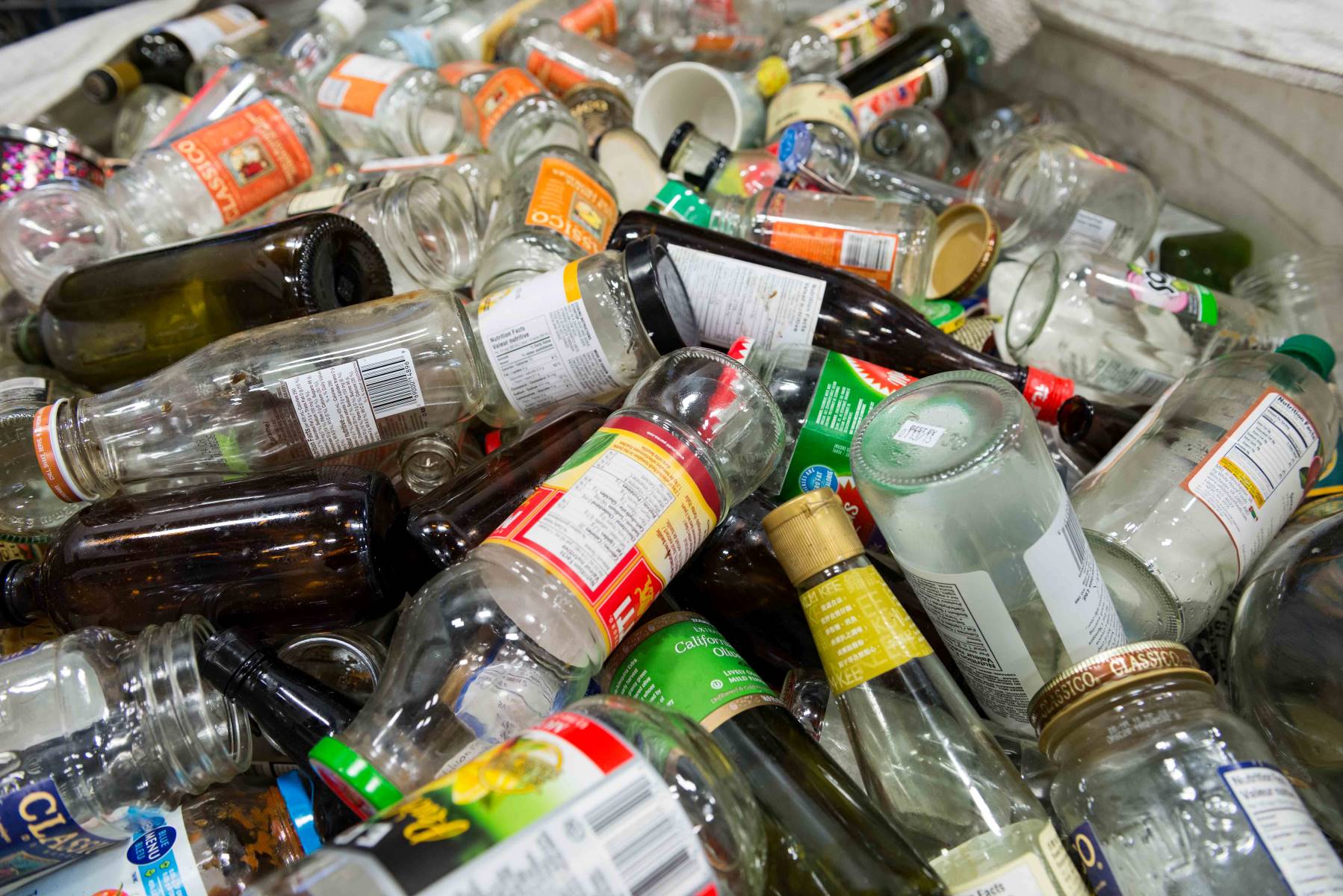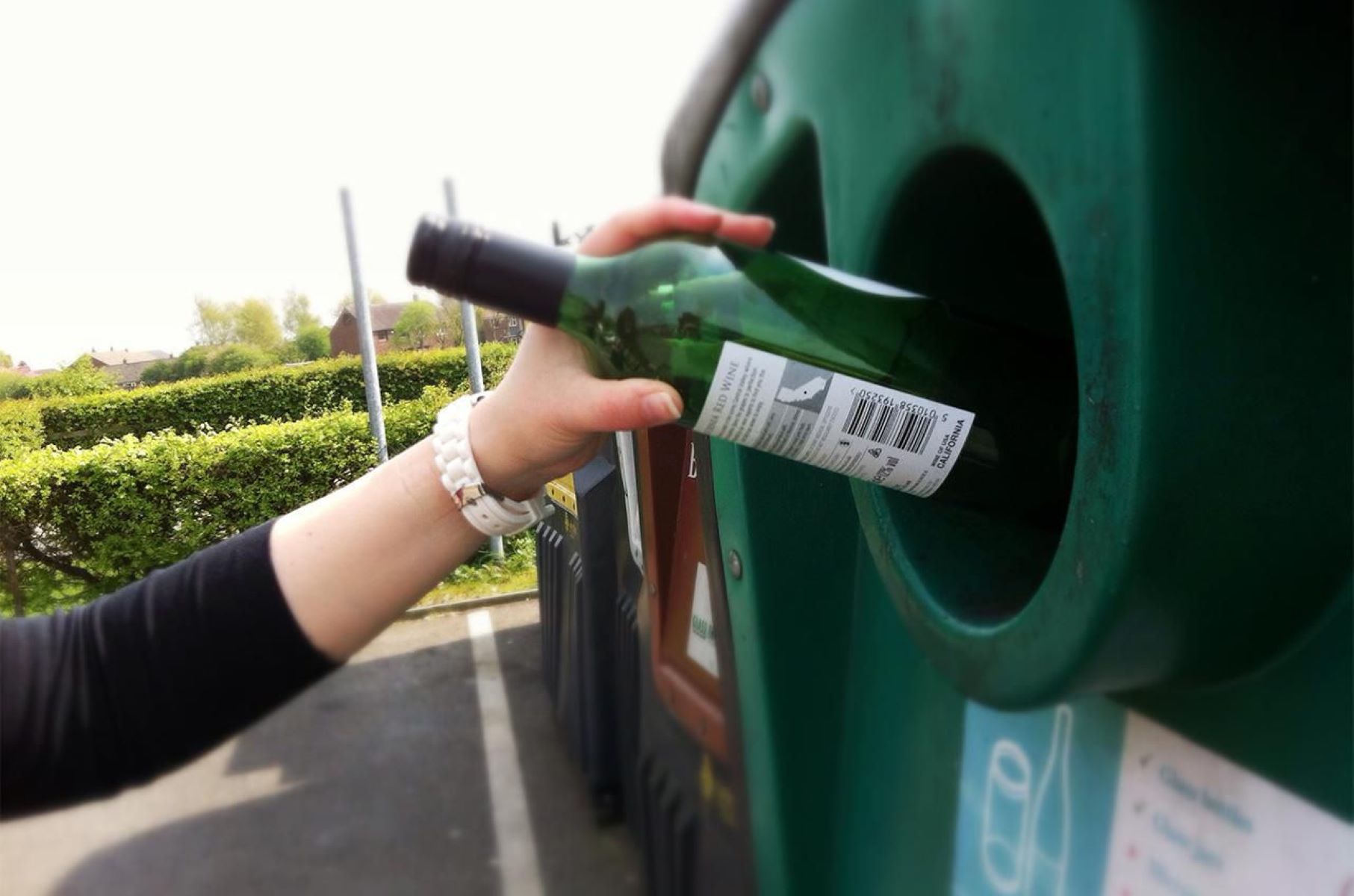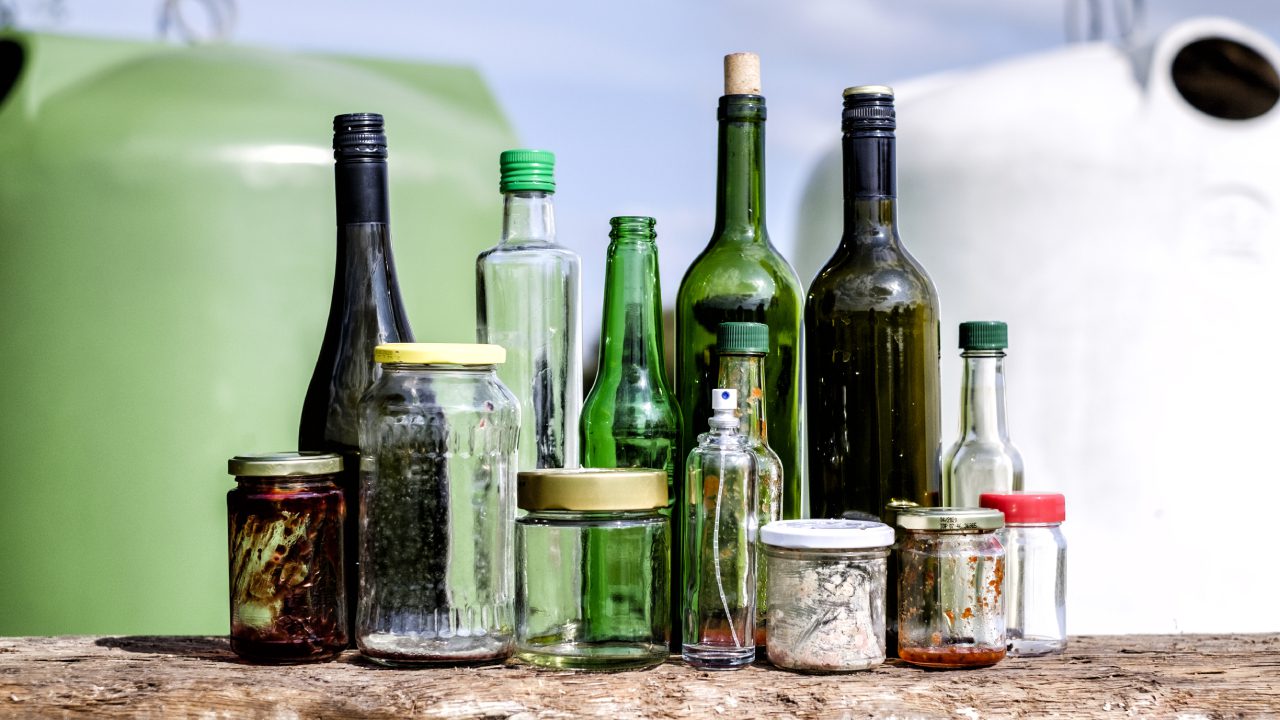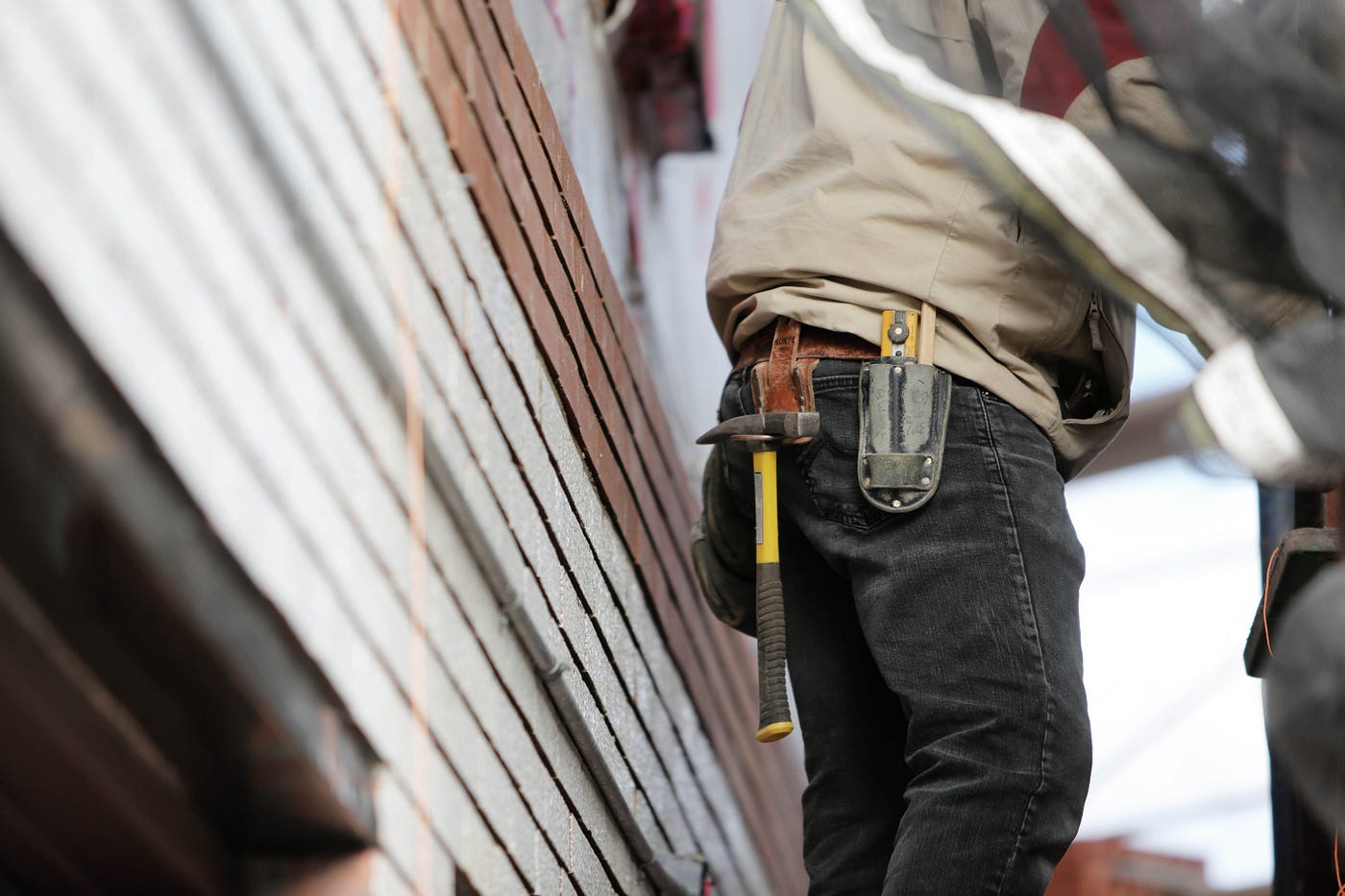Home>Furniture & Design>Interior Design Trends>Why Is Glass No Longer Recyclable


Interior Design Trends
Why Is Glass No Longer Recyclable
Modified: February 18, 2024
Discover the latest interior design trends and learn why glass is no longer recyclable. Stay informed and make sustainable choices for your home.
(Many of the links in this article redirect to a specific reviewed product. Your purchase of these products through affiliate links helps to generate commission for Storables.com, at no extra cost. Learn more)
Introduction
Glass has long been hailed as a sustainable and infinitely recyclable material, cherished for its eco-friendly properties and versatility in various industries. However, a disconcerting shift has emerged in the realm of recycling, casting a shadow over the once-celebrated status of glass as a recyclable material. This transformation has sparked widespread concern and prompted a critical examination of the factors contributing to the decline in glass recyclability.
The evolution of glass recycling has been a topic of growing significance, igniting conversations among environmentalists, policymakers, and consumers alike. The traditional narrative of glass as a perpetually recyclable substance has encountered a formidable challenge, compelling us to delve into the underlying causes and implications of this paradigm shift.
As we embark on this exploration, it becomes evident that the landscape of glass recycling is undergoing a profound metamorphosis, necessitating a comprehensive understanding of the multifaceted issues at play. The once straightforward process of recycling glass has encountered unforeseen hurdles, prompting a reevaluation of its sustainability and viability as a recyclable material.
In the following sections, we will delve into the intricate web of changes, challenges, and potential solutions that have reshaped the trajectory of glass recycling. By unraveling the complexities surrounding this pivotal issue, we can gain valuable insights into the evolving dynamics of sustainable practices and the imperative need for innovative approaches to address the shifting paradigms of recyclability.
Key Takeaways:
- Glass recycling faces challenges due to contamination, lightweighting, and economic factors, impacting its sustainability. Innovative solutions and consumer awareness are crucial for revitalizing glass recycling.
- The environmental impact of glass recycling is significant, offering benefits such as resource conservation and reduced carbon emissions. Alternative solutions, including advanced sorting technologies and consumer education, are key to enhancing glass recycling sustainability.
Changes in Glass Recycling
The landscape of glass recycling has undergone a profound transformation, marked by a series of pivotal changes that have reshaped its fundamental dynamics. Once revered as a stalwart symbol of sustainability, glass recycling has encountered a myriad of challenges that have significantly altered its trajectory.
One of the most notable changes in glass recycling pertains to the evolving consumer behavior and consumption patterns. With the advent of single-stream recycling systems, the traditional separation of glass from other recyclables has become increasingly obsolete. This shift has led to a surge in contamination levels, as glass becomes commingled with various other materials, thereby compromising its recyclability. Consequently, the efficacy of glass recycling has been compromised, necessitating a reevaluation of collection and sorting methodologies to mitigate contamination issues.
Moreover, the proliferation of lightweighting in glass packaging has posed a formidable challenge to the recycling process. As manufacturers strive to reduce production costs and enhance sustainability by utilizing thinner glass, the structural integrity of the material is compromised. This has significant implications for the recyclability of glass, as lightweighting renders it more prone to breakage during collection and processing, thereby diminishing its value as a recyclable material.
Furthermore, the globalization of the recycling industry has engendered a complex web of logistical and economic challenges. The transportation of glass to distant recycling facilities entails substantial costs and carbon emissions, thereby undermining the economic viability of glass recycling. This has prompted a reevaluation of the feasibility of recycling glass on a large scale, necessitating innovative solutions to mitigate the economic barriers that impede its recyclability.
The advent of advanced recycling technologies has also catalyzed a paradigm shift in the realm of glass recycling. While these innovations hold the promise of enhancing the efficiency and sustainability of glass recycling, their widespread implementation poses a formidable challenge. The integration of advanced recycling technologies necessitates substantial investments and infrastructural overhauls, thereby impeding their seamless adoption within the existing recycling framework.
In essence, the changes in glass recycling have ushered in a new era characterized by multifaceted challenges and transformative opportunities. As we navigate this evolving landscape, it becomes imperative to embrace innovative solutions and collaborative efforts to revitalize the sustainability and efficacy of glass recycling. By confronting these changes with resilience and ingenuity, we can pave the way for a revitalized paradigm of glass recycling that aligns with the imperatives of sustainability and environmental stewardship.
Contamination Issues
The pervasive issue of contamination has emerged as a formidable impediment to the recyclability of glass, precipitating a cascade of challenges that have reverberated throughout the recycling ecosystem. At the heart of this conundrum lies the commingling of glass with other recyclable materials within the single-stream recycling framework. This amalgamation engenders a host of contamination issues, as glass becomes intermingled with plastics, paper, and metal, thereby compromising its purity and recyclability.
The ramifications of contamination are manifold, exerting a deleterious impact on the efficacy and sustainability of glass recycling. When glass is commingled with other materials, it becomes tainted with impurities that impede its capacity to be recycled into high-quality glass products. The presence of non-glass contaminants, such as food residue, plastic shards, and metal fragments, poses a significant challenge to the recycling process, necessitating extensive sorting and purification measures to salvage the integrity of the glass.
Moreover, the prevalence of contamination undermines the economic viability of glass recycling, as the costs associated with sorting and purging contaminants escalate substantially. The labor-intensive nature of contamination remediation exerts a financial burden on recycling facilities, thereby diminishing the economic incentives for glass recycling. Consequently, the prevalence of contamination has engendered a disconcerting erosion of the economic feasibility of glass recycling, necessitating a concerted effort to address this pervasive issue.
Furthermore, contamination poses a formidable environmental challenge, as the impurities intermingled with glass compromise the quality and sustainability of the recycled material. The presence of contaminants diminishes the purity and structural integrity of recycled glass, thereby impeding its capacity to be utilized in the production of high-quality glass products. This not only undermines the circularity of the glass recycling process but also engenders a heightened demand for virgin materials, thereby exacerbating the environmental footprint of glass production.
In essence, the contamination issues plaguing glass recycling underscore the imperative need for proactive measures to mitigate the commingling of glass with other recyclable materials. By fostering consumer awareness, implementing targeted sorting technologies, and advocating for the revitalization of source-separated recycling initiatives, we can surmount the scourge of contamination and reinvigorate the sustainability and efficacy of glass recycling. Through concerted efforts and innovative solutions, we can chart a course toward a revitalized paradigm of glass recycling that is characterized by purity, sustainability, and environmental stewardship.
Glass is no longer recyclable in some places because it can contaminate other recyclables and break during the recycling process. Check with your local recycling program for the best way to dispose of glass.
Economic Factors
The economic landscape plays a pivotal role in shaping the viability and sustainability of glass recycling, exerting a profound influence on the intricate dynamics of the recycling ecosystem. At the heart of the economic considerations surrounding glass recycling lies a complex interplay of cost factors, market dynamics, and financial incentives that collectively determine the feasibility and efficacy of glass recycling initiatives.
One of the foremost economic factors that impinges upon glass recycling pertains to the cost of collection, transportation, and processing. The logistical complexities associated with transporting glass to recycling facilities, coupled with the labor-intensive nature of sorting and processing, engender substantial operational costs. These economic considerations pose a formidable challenge to the economic viability of glass recycling, as the expenses incurred in the collection and processing of glass often outweigh the financial returns derived from the sale of recycled glass.
Moreover, the global market dynamics and price fluctuations of recycled glass further compound the economic challenges confronting glass recycling. The demand for recycled glass, influenced by factors such as market trends, consumer preferences, and industrial requirements, fluctuates in tandem with the broader economic landscape. The volatility of the recycled glass market exerts a significant impact on the economic feasibility of glass recycling, as fluctuations in demand and pricing directly influence the financial incentives for recycling facilities and stakeholders.
Furthermore, the economic viability of glass recycling is contingent upon the availability of robust financial incentives and supportive policies. In the absence of incentivizing mechanisms, such as deposit-refund systems and extended producer responsibility initiatives, the economic impetus for glass recycling diminishes substantially. The absence of financial incentives undermines the economic rationale for investing in glass recycling infrastructure and technologies, thereby impeding the widespread adoption of sustainable recycling practices.
Additionally, the economic considerations surrounding glass recycling intersect with broader sustainability imperatives, necessitating a comprehensive evaluation of the lifecycle costs and environmental externalities associated with glass production and recycling. The economic viability of glass recycling hinges upon a holistic assessment of the costs and benefits vis-à-vis the environmental impact, resource conservation, and long-term sustainability of glass recycling initiatives.
In essence, the economic factors underpinning glass recycling underscore the imperative need for a multifaceted approach that integrates cost-effective strategies, market-driven solutions, and supportive policies to bolster the economic viability and sustainability of glass recycling. By fostering a conducive economic environment and incentivizing sustainable practices, we can pave the way for a revitalized paradigm of glass recycling that aligns with the imperatives of economic prudence, environmental stewardship, and long-term sustainability.
Environmental Impact
The environmental impact of glass recycling encompasses a multifaceted spectrum of ecological considerations that resonate across the entire lifecycle of glass production, consumption, and recycling. At the heart of this paradigm lies a critical evaluation of the environmental footprint of glass, encompassing its resource utilization, energy consumption, carbon emissions, and ecological ramifications.
The production of virgin glass entails substantial resource extraction and energy consumption, exerting a significant environmental toll. The extraction of raw materials, such as silica sand, soda ash, and limestone, necessitates extensive mining activities that disrupt natural ecosystems and deplete finite resources. Furthermore, the energy-intensive process of glass manufacturing, characterized by high-temperature melting and shaping, engenders substantial carbon emissions and environmental pollutants. The environmental impact of virgin glass production underscores the imperative need for sustainable alternatives that mitigate resource depletion and environmental degradation.
In contrast, the recycling of glass offers a compelling array of environmental benefits that resonate across multiple dimensions. By utilizing recycled glass as a raw material, the production of new glass products necessitates substantially lower energy consumption and carbon emissions. The incorporation of recycled glass cullet in the manufacturing process not only conserves energy but also mitigates the environmental pollutants associated with virgin glass production. Moreover, the utilization of recycled glass contributes to the preservation of natural resources, as it obviates the need for extensive mining activities and resource extraction.
Furthermore, the environmental impact of glass recycling extends beyond the reduction of energy consumption and carbon emissions. The utilization of recycled glass in the production of new glass products fosters a closed-loop system that embodies the principles of circular economy and resource conservation. By diverting glass from landfills and incineration facilities, recycling mitigates the environmental burdens associated with waste disposal, thereby fostering a sustainable approach to waste management and environmental stewardship.
Additionally, the environmental impact of glass recycling reverberates across broader ecological considerations, encompassing wildlife conservation, habitat preservation, and ecosystem resilience. The reduction of resource extraction and mining activities associated with virgin glass production contributes to the preservation of natural habitats and biodiversity, thereby fostering a harmonious coexistence between industrial activities and ecological integrity.
In essence, the environmental impact of glass recycling underscores the imperative need for sustainable practices that mitigate resource depletion, energy consumption, and environmental pollutants. By embracing the principles of circular economy and environmental stewardship, we can chart a course toward a revitalized paradigm of glass recycling that embodies the imperatives of ecological sustainability, resource conservation, and environmental resilience.
Read more: Who Buys Glass For Recycling
Alternative Solutions
The quest for revitalizing the sustainability and efficacy of glass recycling necessitates a proactive pursuit of alternative solutions that transcend the prevailing challenges and catalyze a transformative paradigm shift. Embracing a multifaceted approach that integrates innovative technologies, consumer education, and policy interventions holds the promise of reinvigorating the viability and sustainability of glass recycling.
One of the pivotal alternative solutions lies in the advancement of sorting and purification technologies that mitigate contamination issues and enhance the purity of recycled glass. By leveraging state-of-the-art sorting equipment, such as optical scanners and advanced separation systems, recycling facilities can effectively segregate glass from commingled recyclables, thereby obviating contamination and preserving the integrity of the glass stream. The integration of purification technologies, such as air classifiers and vacuum systems, further augments the quality of recycled glass, fostering a purer and more sustainable material for the production of new glass products.
Moreover, fostering consumer awareness and engagement constitutes a linchpin of alternative solutions to bolster the sustainability of glass recycling. Educating consumers about the significance of source separation, the perils of contamination, and the environmental benefits of glass recycling engenders a culture of conscientious recycling practices. By instilling a sense of environmental stewardship and responsibility, consumers can play a pivotal role in mitigating contamination and preserving the purity of glass recyclables, thereby fortifying the sustainability of the recycling ecosystem.
Furthermore, the formulation and implementation of supportive policies and incentivizing mechanisms represent a critical alternative solution to invigorate the economic viability of glass recycling. By advocating for the establishment of deposit-refund systems, extended producer responsibility initiatives, and financial incentives for recycling facilities, policymakers can engender a conducive economic environment that bolsters the financial impetus for glass recycling. Additionally, the integration of regulatory frameworks that prioritize source-separated recycling and contamination mitigation fosters a sustainable recycling landscape that aligns with the imperatives of economic prudence and environmental stewardship.
In essence, the pursuit of alternative solutions to revitalize glass recycling necessitates a concerted effort to integrate technological innovations, consumer engagement, and policy interventions. By embracing these alternative solutions with resolve and ingenuity, we can chart a course toward a revitalized paradigm of glass recycling that embodies the imperatives of sustainability, economic viability, and environmental stewardship.
Frequently Asked Questions about Why Is Glass No Longer Recyclable
Was this page helpful?
At Storables.com, we guarantee accurate and reliable information. Our content, validated by Expert Board Contributors, is crafted following stringent Editorial Policies. We're committed to providing you with well-researched, expert-backed insights for all your informational needs.















0 thoughts on “Why Is Glass No Longer Recyclable”